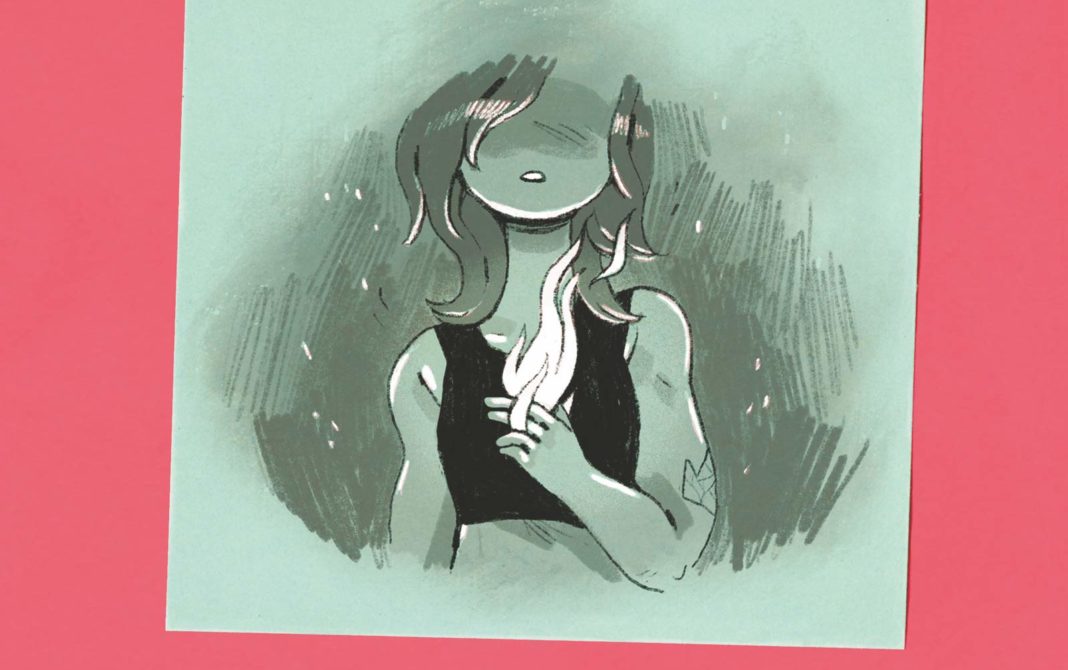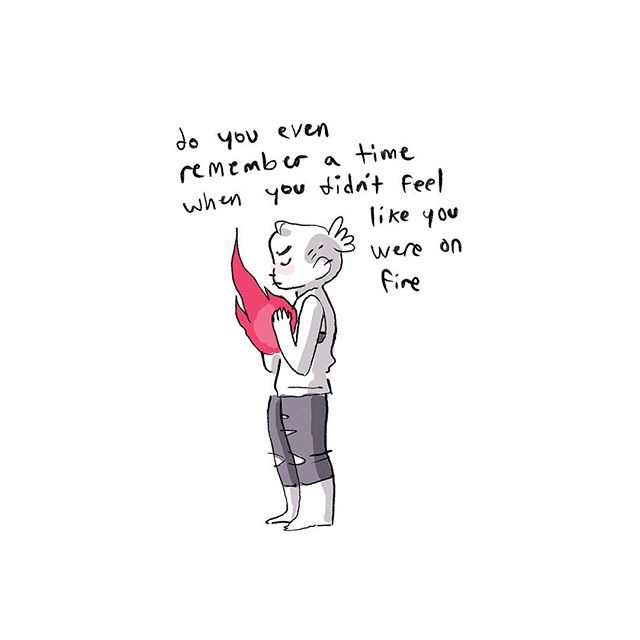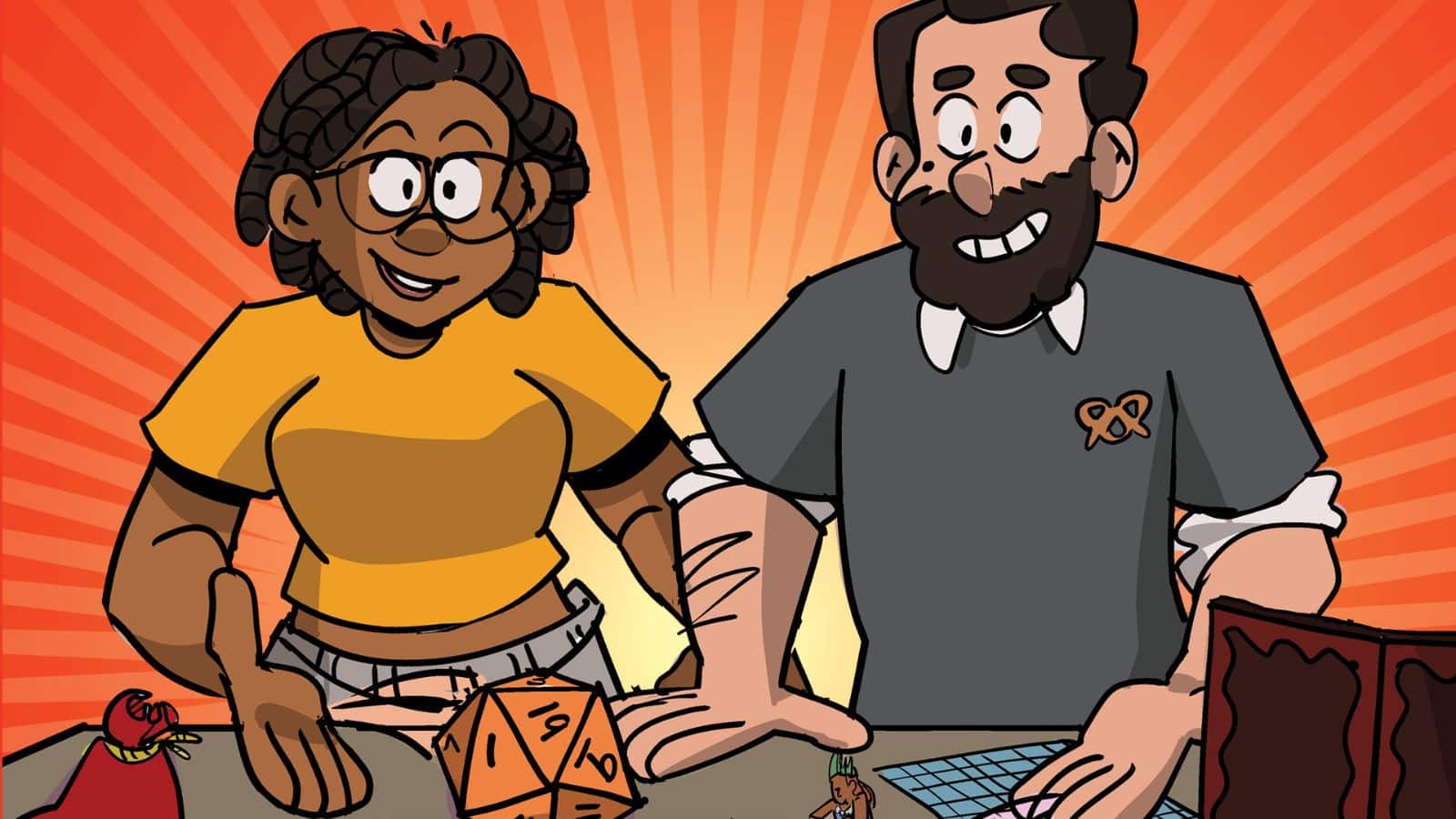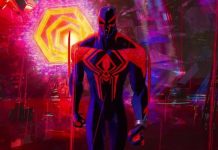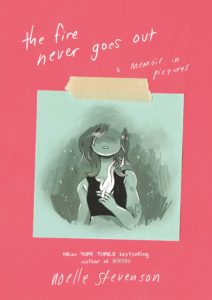
Written and illustrated by Noelle Stevenson
Published by Harper
You’ve felt this story before, though you’ve never read it. I mean that beyond whether or not you’ve followed Noelle Stevenson through the pages of The Fire Never Goes Out. There aren’t other memoirs written like this. The hole. The fire. Stevenson’s autobio in real time is growth, from an untrained talent passionate about drawing to a lauded graphic novelist, celebrity creator, and animation showrunner. She struggles with trusting herself. Falls in love, for real.
This isn’t that story.
Stevenson is aware of her public life. The assumption is that if you are reading this book, it isn’t because you’re curious as to who Noelle Stevenson is. Well, for better or for worse, this is A People’s History of Noelle Stevenson. The memoir is another side of her life, a true telling of her inside story. Not the story of Stevenson’s success with Lumberjanes and Nimona and She-Ra, but the story of what was going on at the same time that no one got to see.
It’s a memoir of her coming to terms with absence, giving a name to a thing inside her but apart from her. Stevenson’s is a life that in many ways is pushed to its edges by this flame, this spacious crater, and The Fire is a document of moments she has made those feelings come to life, frozen and burning on the page. The reader shares these intimacies, notes to self as powerful as a play, as poetry, as a fruit split and passed to open hands.
When I say you haven’t read it, what I mean is the whirlwind of faith, identity, satisfaction, crisis — that happens outside of the memoir. It is a secret told once at the beginning and not repeated until Noelle and the reader come together again, when she confronts the fire, the emptiness, and emerges as the phoenix.
The comics that make up this memoir are ones Stevenson made for herself. There’s a life story to follow, which you get to see in the growth of her comics year by year, where Stevenson got on-board with sequential art, where it took her. What makes this stuff special is that Stevenson is a professional and an artist, and The Fire Never Goes Out collects works made by Noelle the Latter. When you love making art so much, the stuff you are compelled to make even though art is your job, the art that you are incomplete without creating, is what Stevenson is letting us see.
The story, the reason for the fire, is hinted at in the personal comics, its absence as loud as its presence. Stevenson the master storyteller sees the moments she captured that speak the clearest or the loudest to her pain from the fire, comics of raw power to the right eyes, and then places them in time and in context. The space between her diary comics and her public life is the length between the walls of the labyrinth, and you can’t see it but for glimpses, but a minotaur is chasing the story.
Call it a segue, Stevenson is a beast of an artist. You could say it’s the loose style one associates with sketchbook work and personal jams and such if you settle for a quick pass. But pause on any image in the book and there’s a storyboard artist’s eye for dynamic framing and acting through gesture. The single line contour that creates a flex will have a second marker shadow to define the muscles. Everywhere there is more — more scribbles, more details, a flick of texture to clothes, a spot color that resets the mood, a cloud turns to stormy weather. And at any time, if the drama calls for it, Stevenson can tighten up. You get the goofy, carefree fun of someone making art for their own enjoyment and the instant gravitas of sophistication in linework when it’s called for.
Stevenson is great at making a lot of lines look like barely any marks on the page at all. Her figures are kind of round, kind of angled, not rigid like an indie artist in the US but not as smooth or wiggly as BDs or manga either. Like Geneviève Castrée, Stevenson taps into a style of her time and remains genuinely, recognizably herself. Stevenson falls somewhere between The New Yorker and anime, Moominvalley bodies but drawn with a Peanuts number of trips to the inkpot. Very simple, very distinct, not lacking in work for its simplicity, nor is it overworked minimalism. The fit-to-thicc bodies that Stevenson has grown into drawing are perfect proportions of anatomy and gesture, sweet and serious.
Noelle Stevenson has here a book of hope. Of womanhood as it struggles with the American experiment. A book of depression. The expectation to constantly produce is a burden, and feeling obligated to be a success (especially after obtaining it) feeds into an unhealthy anxiety about losing the spark. Trying, failing, and trusting: The Fire Never Goes Out.


